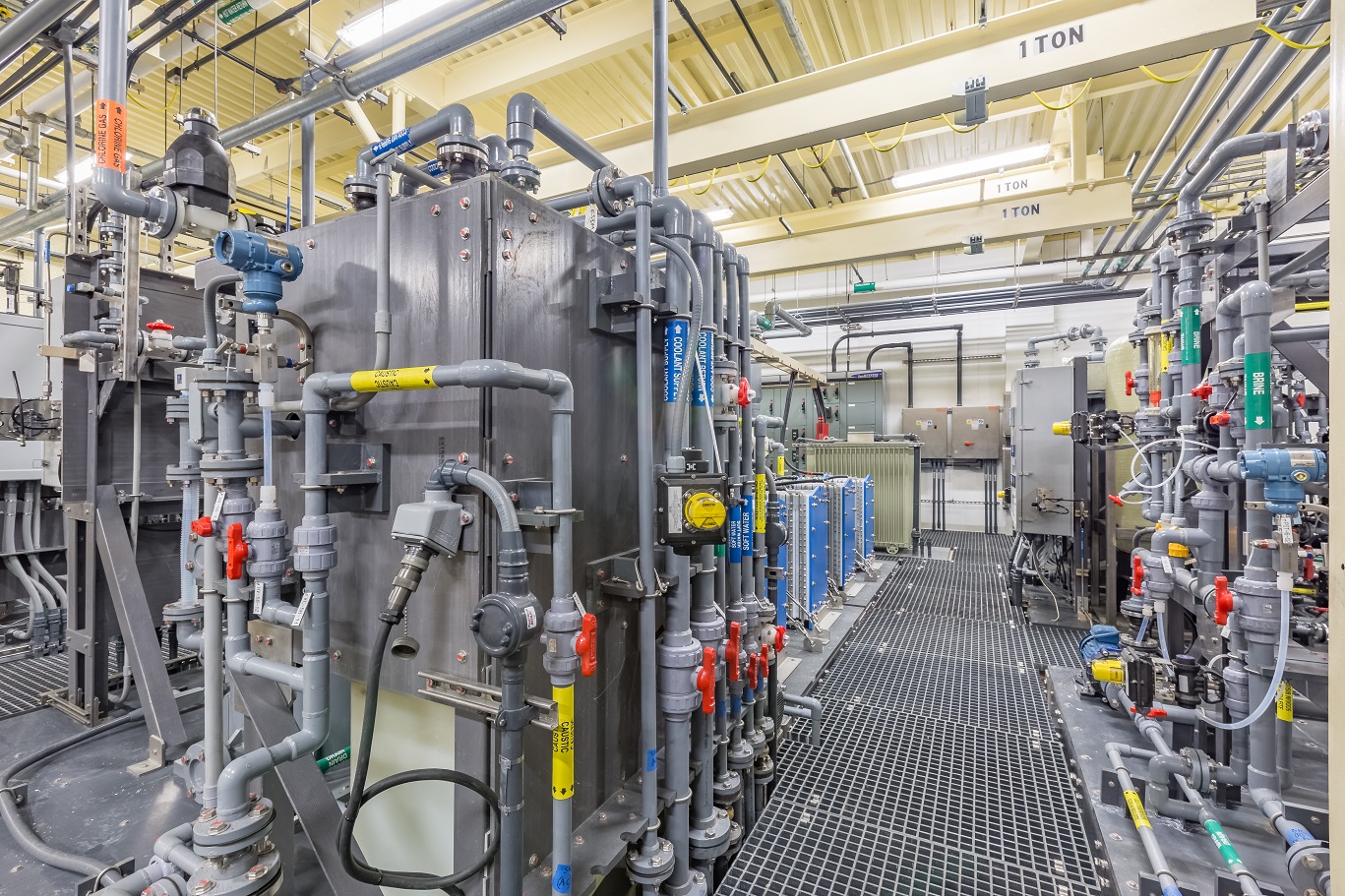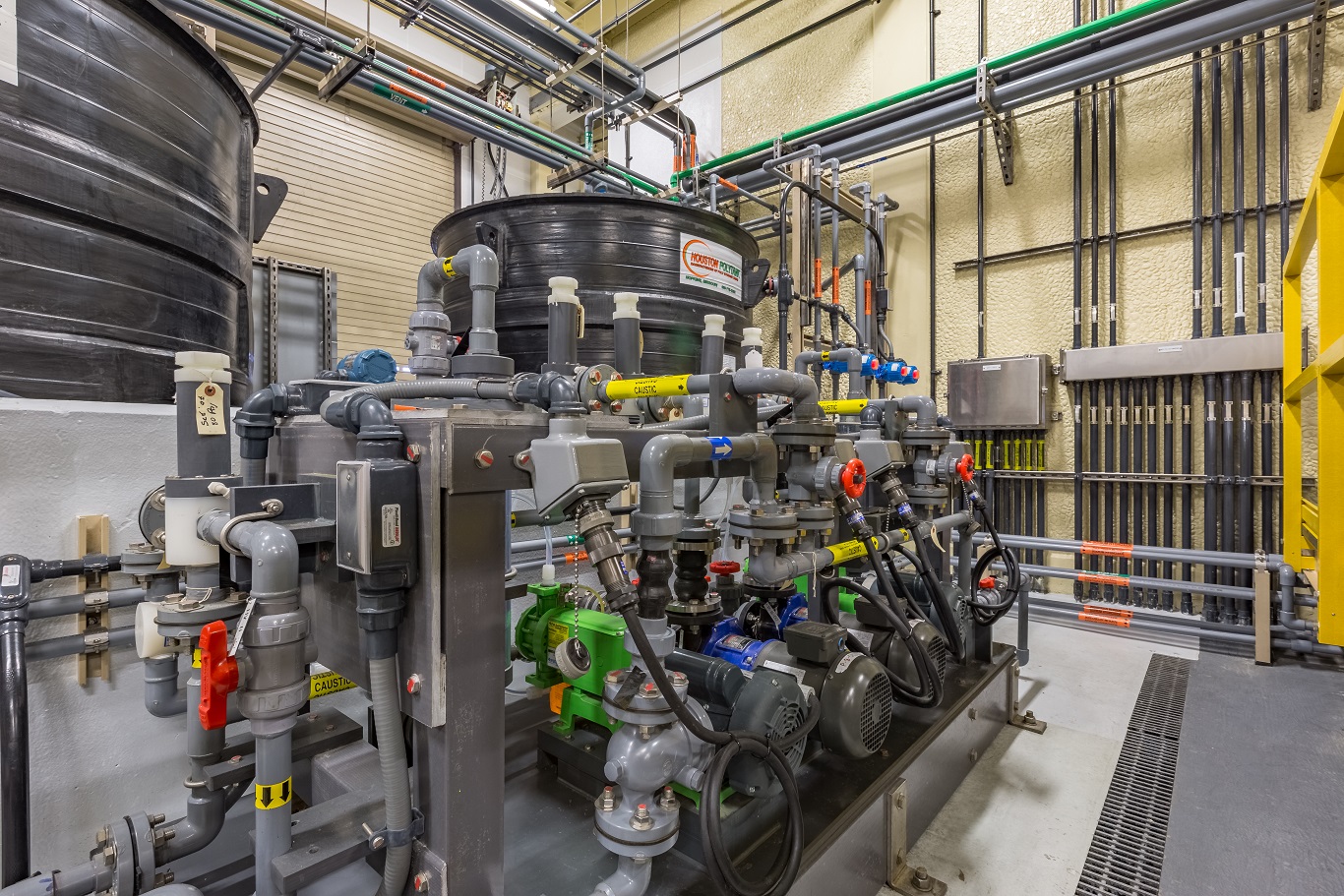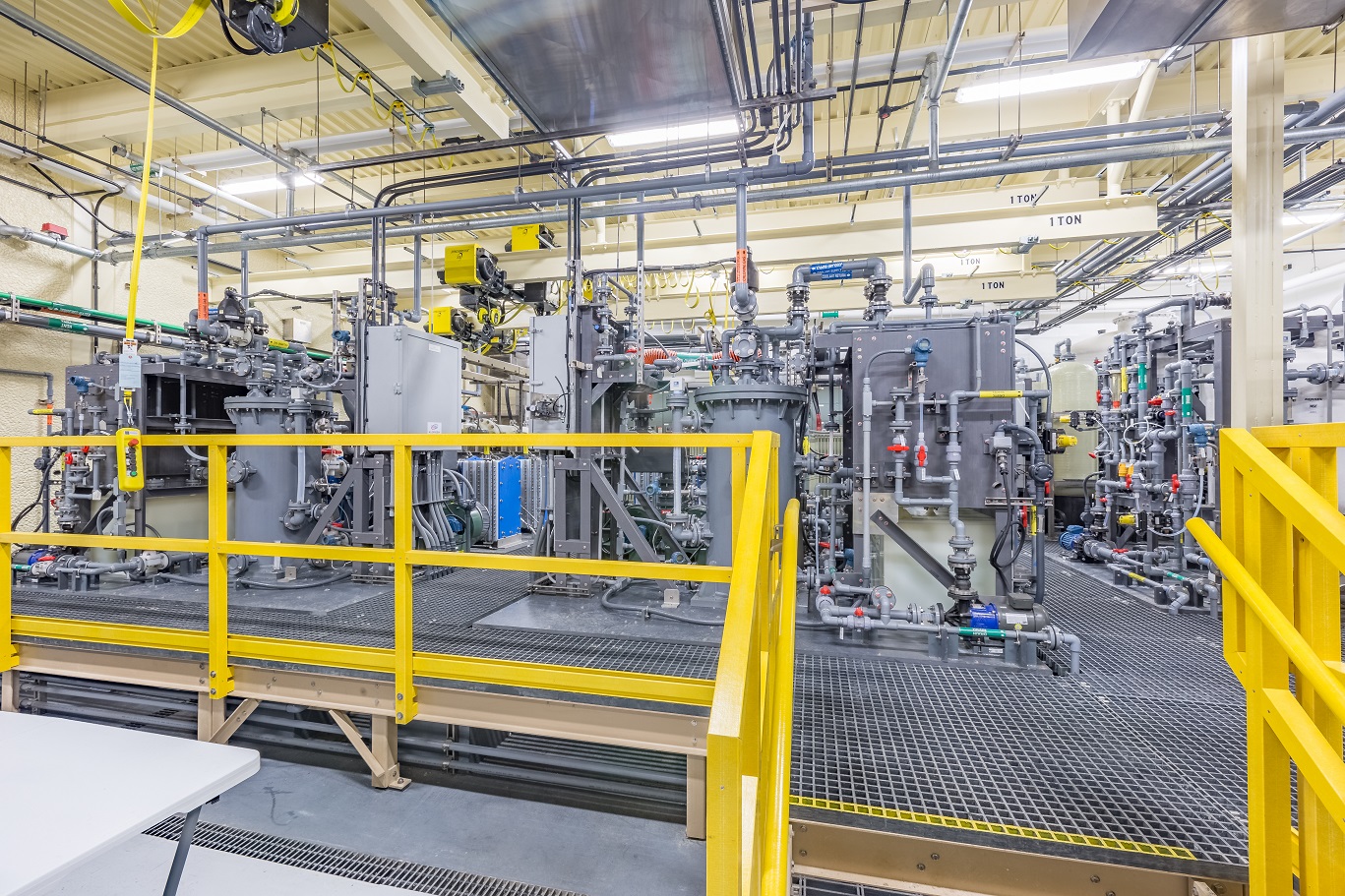Asplund Wastewater Treatment Facility Disinfection Upgrades Project
The Anchorage Water and Wastewater Utility (AWWU) has operated the John M. Asplund Wastewater Treatment Facility (AWWTF) for over 30 years. As the facility has aged and influent flows increased, infrastructure upgrades have been periodically addressed as needed to meet anticipated future demands. One facility upgrade anticipated by AWWU for the AWWTF in the near term is the effluent disinfection process. The plant has used chlorine gas for over 30 years to disinfect primary effluent. As the gas disinfection process equipment nears the end of its service life, AWWU wished to assess whether to retain gas chlorination or replace it with an alternative form of disinfection. In 2007, GV Jones & Associates, Inc. was commissioned to study disinfection alternatives for the AWWTF. The study compared upgrading the existing gas chlorine system with the installation of new equipment for 12.5% sodium hypochlorite generation and disinfection, 0.8% sodium hypochlorite generation and disinfection, delivered sodium hypochlorite disinfection, chlorine dioxide disinfection, ozone disinfection, UV disinfection, combined UV and chlorine-based disinfection, and emerging technologies. In 2009, based on this report, the Municipality of Anchorage (MOA) AWWU decided to move forward with the installation of a system to disinfect the effluent with 12.5% sodium hypochlorite generated on-site.

 Due to the necessity of design, the MOA decide to pre-select the equipment and pre-procure prior to the construction phase. Since the majority of the system design is proprietary to the manufacturer, the system must be purchased prior to obtaining design drawings. Once the design drawings were made available, GVJ&A laid the system out in one of the existing buildings and integrated the generation equipment into the rest of the system. In 2014, the design by GVJ&A, including design drawings, process diagrams and technical specifications was put out to bid by the MOA. By the end of 2015, the system was installed and producing hypochlorite. The generation system involves creating a saturated sodium chloride solution(brine), using pure sodium chloride (99.9%); softening the brine to remove almost all of the hardness; using ion exchange to prepare the brine; sending the brine through an electrolyzer in order to produce chlorine gas and brine from the anode and hydrogen gas and sodium hydroxide from the cathode; the sodium hydroxide is used to remove the chlorine gas from the brine; the brine is returned to the brine tank to be resaturated; and the chlorine gas is forced into solution. The excess chlorine gas created by the system (due to not wanting to transport make-up sodium hydroxide to site) is injected into the effluent using the existing chlorine gas injection system and the hypochlorite is dosed into the effluent using a new feed system.
Due to the necessity of design, the MOA decide to pre-select the equipment and pre-procure prior to the construction phase. Since the majority of the system design is proprietary to the manufacturer, the system must be purchased prior to obtaining design drawings. Once the design drawings were made available, GVJ&A laid the system out in one of the existing buildings and integrated the generation equipment into the rest of the system. In 2014, the design by GVJ&A, including design drawings, process diagrams and technical specifications was put out to bid by the MOA. By the end of 2015, the system was installed and producing hypochlorite. The generation system involves creating a saturated sodium chloride solution(brine), using pure sodium chloride (99.9%); softening the brine to remove almost all of the hardness; using ion exchange to prepare the brine; sending the brine through an electrolyzer in order to produce chlorine gas and brine from the anode and hydrogen gas and sodium hydroxide from the cathode; the sodium hydroxide is used to remove the chlorine gas from the brine; the brine is returned to the brine tank to be resaturated; and the chlorine gas is forced into solution. The excess chlorine gas created by the system (due to not wanting to transport make-up sodium hydroxide to site) is injected into the effluent using the existing chlorine gas injection system and the hypochlorite is dosed into the effluent using a new feed system.



